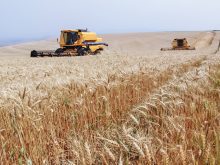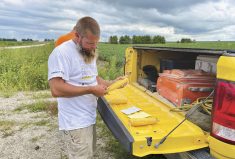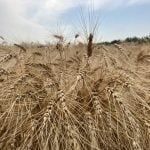Agribusiness consultancy StoneX on Jan. 2 cut its estimate for Brazil’s soybean crop in 2023-24 due to lack of rain in key farmlands. It now forecasts a 152.8 million tonne harvest, down from its previous estimate of 161.9 million tonnes.
The cut means StoneX no longer forecasts a record crop in Brazil, the world’s largest producer and exporter of soybeans, as output this season would come in below the 157.7 million tonnes reaped in 2022-23.
StoneX analysts said showers last month were irregular in most Brazil soybean fields, including top grain producing state Mato Grosso, where output is set to fall more than 14 per cent from the previous season.
Read Also

Wilbur-Ellis Nutrition purchased by an affiliate of Balmoral Funds
Wilbur-Ellis Nutrition, LLC, a leading provider of custom nutrition products in pet, livestock and aquaculture markets, has been acquired by an affiliate of Balmoral Funds, LLC.
They said weather would continue to play a key role in coming months, as some states tend to plant soybeans later than others and there were also delays in sowing.
“In any case, the real size of the crop will only be known as the harvest progresses,” said the analysts, who also slashed their forecast for Brazil’s soybean exports this season to 95 million tonnes from 103 million previously, due to lower supply.
StoneX also reduced its forecast for Brazil’s total 2023-24 corn production to 124.6 million tonnes from 126 million, as lower production in northern and northeastern Brazil amid weather issues would affect overall output.
Brazil’s first corn crop is expected to reach 25.8 million tonnes, 2.4 per cent less than estimated in December, while the second crop was estimated at 96.6 million tonnes, down 0.8 per cent.
“Due to the significant delay seen in soybean planting, there is a greater chance that a larger part of the second crop will be sown outside the ideal window,” the analysts noted.
The second crop represents about 75 per cent of Brazil’s national corn output in a given year and is sown after soybeans are harvested in the same areas.















